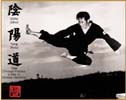The Eight Martial Arts Styles Taught as One
7.) Bagwa Chung (Chinese Style)
Bagwa walking positions enable one to move smoothly and lightly (like a coiled spring), with speed and power. Includes both offensive and defensive movements that balance the body. Develops internal and external strength.
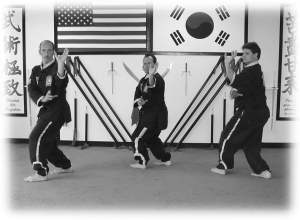 |
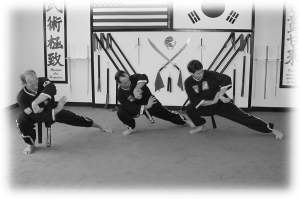 |
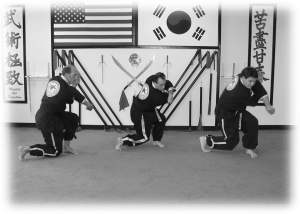 |
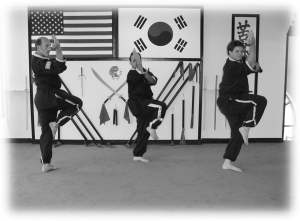 |
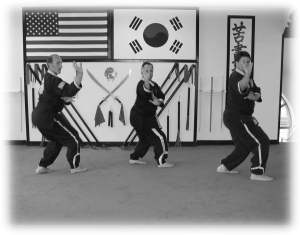 |
Bagwa walking and switching techniques. |
- Originated from understanding and applying Yin and Yang principles.
- Nature's energies flow into the body during Bagwa practice. These universal energies can be used to benefit an individual's health and for offensive and defensive movement.
- Bagwa practice can develop the body at 3 different levels:
- Sung-Upper body
- Jung-Middle area of body
- Ha-Lower body below the navel
- Developing the Sung and Jung with Bagwa practice:
To develop upper body strength and flexibility, Bagwa should be practiced in a higher walking position while moving at a faster pace. The practitioner walks in a 30 ft. diameter circle, switching directions after covering the circle perimeter each time. Specific switching techniques are used to develop the middle and top of the body, building speed, coordination, flexibility and an overall good physique. The lower body becomes thinner for an overall balanced look. Equilibrium is achieved with weak and unbalanced areas of the body. The entire body moves in harmony, developing tremendous internal and external strength. The internal strength developed from Bagwa practice can prevent illness, or heal an illness that has invaded the body.
Fire is the heat or body temperature, the wind is your breath, and water is your blood. Through Bagwa practice, you can unite all three and bring nature's energy into the body to meld with your own energy, achieving tremendous inner strength.
- Developing Ha with Bagwa practice:
Walking the Bagwa circle, gradually going lower for extended periods and switching directions less frequently, will concentrate strength in the lower body. The thighs, calves and hips will get larger and stronger. And the shape of the body will appear larger on the bottom and smaller on the top. If you practice Ha exclusively, you will develop only partial strength which is focused on the lower body.
Bagwa switching techniques:
- Sung, Top-36 switching movements
- Jung, Middle-36 switching movements
- Ha, Lower-36 switching movements
- There are a total of 108 main foundation Bagwa switching movements which can be used offensively and defensively.
- Each switching technique should take 1 second to complete, developing miraculous strength.
- As one progresses higher, the offensive and defensive strikes become extremely powerful, and can be used to defend against multiple assailants.
- Both beginner and advanced students can practice Bagwa.
This is only an intermediate explanation about Bagwa practice. Just to give an example of the depth of Bagwa, an advanced explanation would take several books to detail.
|
